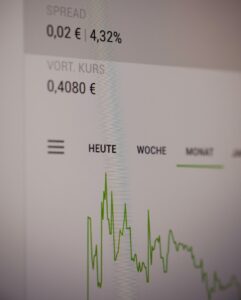Understanding the Importance of Volatility Indicators in Forex Trading
Volatility is a key concept in the world of forex trading. It refers to the degree of variation in the price of a currency pair over time. Forex traders closely monitor volatility as it can provide valuable insight into potential trading opportunities and risks. To measure and analyze volatility, traders often use volatility indicators. In this article, we will explore the importance of volatility indicators in forex trading.
Volatility indicators are technical tools that help traders understand and assess the volatility of a currency pair. They provide traders with a visual representation of how much and how frequently the price of a currency pair fluctuates. By analyzing these indicators, traders can make informed decisions about when to enter or exit a trade.
One of the most widely used volatility indicators is the Average True Range (ATR). ATR measures the average range between the high and low prices of a currency pair over a specific period. It is often used to set stop-loss and take-profit levels, as it helps traders determine the potential risk and reward of a trade. A higher ATR value indicates higher volatility, while a lower value suggests lower volatility.
Another popular volatility indicator is the Bollinger Bands. Bollinger Bands consist of three lines: the middle band, which is a simple moving average, and the upper and lower bands, which are calculated based on the standard deviation of the price. The width of the bands represents the volatility of the currency pair. When the bands are wide, it indicates high volatility, while narrow bands indicate low volatility. Traders often look for price breakouts when the bands contract and then expand, as it can signal potential trading opportunities.
The Average Directional Index (ADX) is another volatility indicator used in forex trading. It measures the strength of a trend and the level of volatility in the market. ADX values range from 0 to 100. A higher ADX value indicates a stronger trend and higher volatility. Traders can use the ADX indicator to filter out trades during periods of low volatility or to identify potential trend reversals.
Volatility indicators can also be combined with other technical indicators to generate trading signals. For example, combining the Bollinger Bands with the Relative Strength Index (RSI) can provide traders with confirmation signals. If the price of a currency pair touches the upper band and the RSI is overbought, it may indicate an opportunity to sell. Conversely, if the price touches the lower band and the RSI is oversold, it may indicate a buying opportunity.
Understanding the importance of volatility indicators in forex trading is crucial for traders to make informed decisions. By using volatility indicators, traders can identify potential trading opportunities, set appropriate stop-loss and take-profit levels, and manage their risk effectively. These indicators provide valuable insights into the market’s behavior, allowing traders to adapt their strategies accordingly.
However, it is important to note that volatility indicators are not foolproof. They are based on historical price data and cannot predict future price movements with certainty. Traders should use volatility indicators in conjunction with other technical and fundamental analysis tools to form a comprehensive trading strategy.
In conclusion, volatility indicators play a vital role in forex trading by providing valuable information about the volatility of currency pairs. They help traders identify potential trading opportunities, set appropriate risk management levels, and adapt their strategies to changing market conditions. By understanding and utilizing volatility indicators effectively, traders can enhance their chances of success in the forex market.






